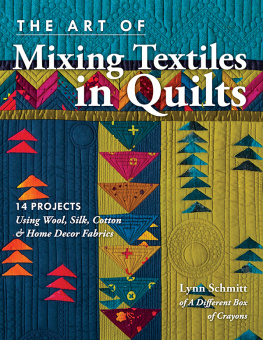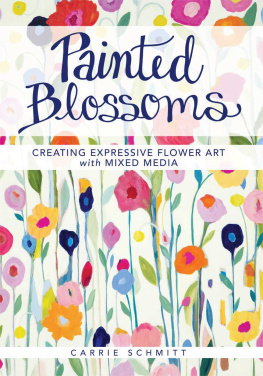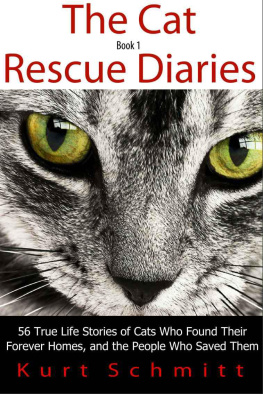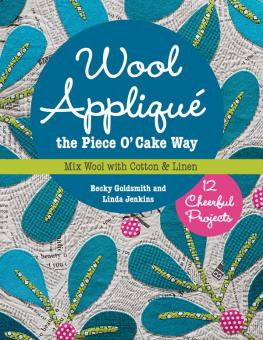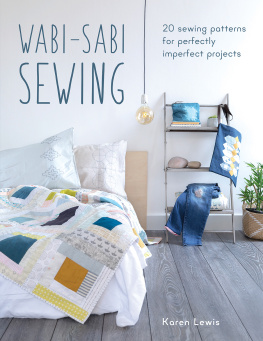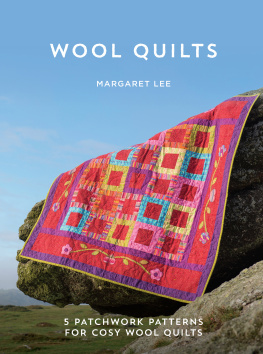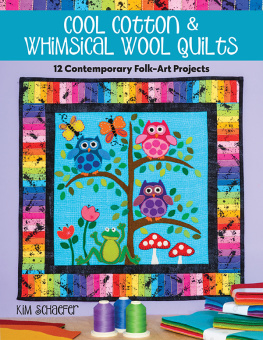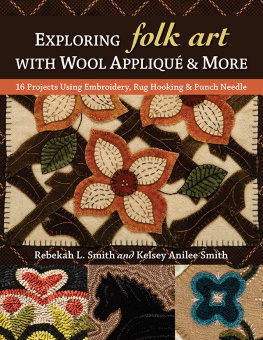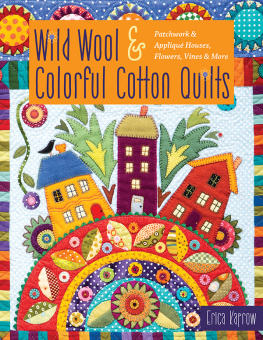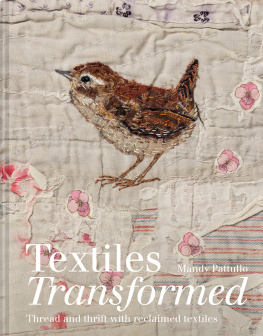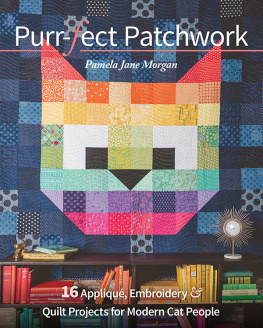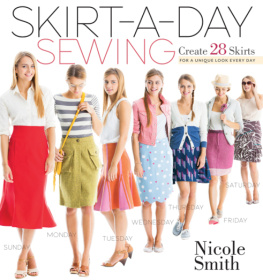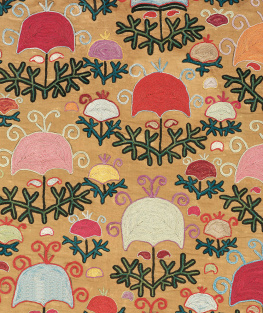Publisher: Amy Marson
Creative Director: Gailen Runge
Acquisitions Editor: Roxane Cerda
Managing Editor: Liz Aneloski
Editor: Kathryn Patterson
Technical Editor: Julie Waldman
Cover/Book Designer: April Mostek
Production Coordinator: Zinnia Heinzmann
Production Editor: Jennifer Warren
Illustrator: Aliza Shalit
Photo Assistant: Mai Yong Vang
Style photography by Lucy Glover and instructional photography by Mai Yong Vang of C&T Publishing, Inc., unless otherwise noted
Published by C&T Publishing, Inc., P.O. Box 1456, Lafayette, CA 94549
DEDICATION
With overwhelming gratitude, I dedicate this book to all the free spirits I have known in my life, especially those in the quilting community. I thank my mentors, who along the way have guided, encouraged, taught, and molded me, not just in this vocation but also throughout all the manifestations of my careers.
It all naturally started with my parents, without whom there would be no me. To my mother, who gave me that first box of crayonsand oh, glory, the day she bought the 96-count box with the sharpener! To my dad and brother, who taught me by example to work and work and work until it was right, not just complete.
To Grandma Elsie, without whom I would never have had the courage to question or even to try to fly.
To my children, Colin and Dana, for the joy and light they shine into my world, and for whom I push on every day, wanting to show them that obstacles are there to be overcome.
To my husband, Gerry, for his love, patience, support, and guidance, especially when things seemed overwhelming and the end was so far out of sight.
Thank you to all of you for believing in me when I sometimes didnt. I am the sum of so many things, and you each bring a color to my crayon box that is unique to youone I would never want to be without.
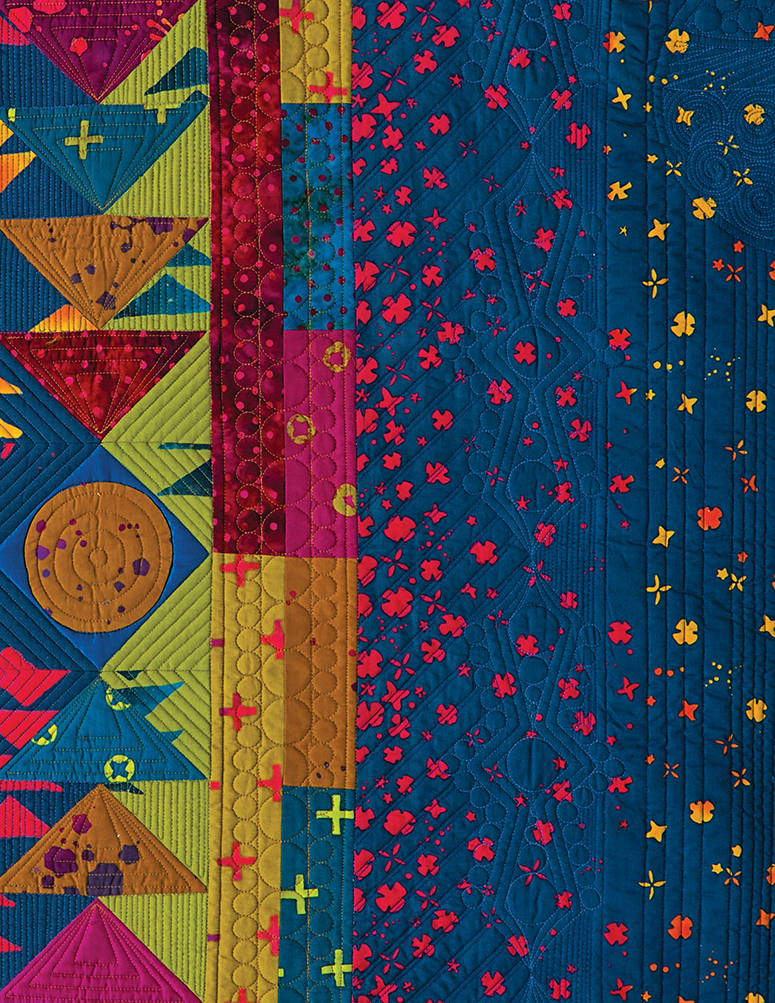
ACKNOWLEDGMENTS
My sincere thanks to Dawn Larsen, my internationally award-winning longarm quilter extraordinaire, without whom I would have only half the vision.
A big thank-you to Sue Henderson, my dear friend, without whom none of this would be possible. She remains my right hand and at times my left hand, too, keeping me grounded in so many ways when it is often hard to stay on a single path.
Andlast but never leastthank you to Renee Nanneman, my dear friend, co-teacher, and quilting maven. With love and patience, she has taught me, guided me, and held my hand along the way.
Introduction
It may be that you are not yourself luminous, but you are a conductor of light. Some people without possessing genius have a remarkable power of stimulating it.
Sir Arthur Conan Doyle
Inspirationwhere does it come from? Thats a question I am often asked. The answer isnt as simple as it is concise: Inspiration comes from everywhere.
Design isnt so much an occupation or even a profession for me as it is a way of life. And when I say that, I mean it on a very fundamental, visceral level. Its a way of seeing. And feeling, of course, but it all starts with the seeing part, and that itself is more than just perceiving something. Its a process that only just begins with thatthe visual encounter of something. That visual experience is the trigger. If the image is powerful, even in some small, subjective way, and the stars are aligned at that moment (okay, maybe Im being a bit dramatic here, but there is a certain unpredictable magic to it), what we often call inspiration follows.
I think designers can sometimes be thought of as mediums, channeling a kind of energy wrought from a visual experience and holding it for a moment, just long enough to imbue that energy with form, line, and texture. Only then do they send it on its way, newly clad in color and context, to complete the composition to which this inspiration has given birth. We are at times simply prisms; we accept the raw light of an evocative visual experience and split that light into wavelengths of intense hue to be woven into something new, which hopefully will give others pleasure in experiencing it, too.
So where do I find inspiration? In a world so rich in visual treasure, maybe the better question is where do I not? It surrounds us every day. With this book, I hope to inspire you and enable you to open your mind and heart to yet another new facet of our quilting world: mixed-medium textiles. It isnt really a new concept. Its an old one revisited with new eyes. It is not the intent of this volume to discourage you from using cottonquite the contrary. It is only to ask you to consider adding to your cotton world. The possibilities truly are endless, and the hues that different textures of fabrics lend to our palette give a whole new depth to the colors in which we play. Certainly there is much to be learned, but it is mostly common sense (and a lot of trial and error). Ive often said, I make the mistakes, so you dont have to! and believe me, I have yet I am not discouraged. I am excited! I know I have only scratched the surface in terms of the possibilities this eclectic textile world holds, and I hope you, too, will enjoy playing with my box of crayons.

ECLECTIC FABRIC GUIDELINES
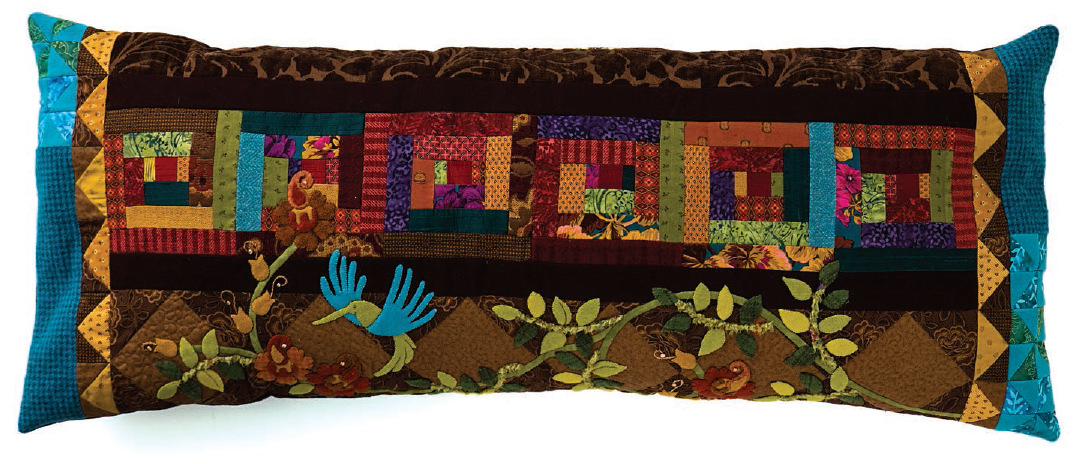
Ode to My Divas Bolster
Ode to My Divas was one of my first patterns designed for use with mixed-medium textiles. I developed it to illustrate the texture and depth of color achieved through the combining of wools, silks, batiks, traditional and nontraditional cottons, and even selectively chosen upholstery fabrics. The look is scrappy and requires only small bits of many things to elevate the project to a rich display of texture and color.
The foundation of eclectics is working with alternative textiles within the context of traditional quilting. One of the reasons I was first drawn to quilting was because, as with many other art forms, you can track history within the piece itself. The spirit of the times can be seen in the colors and the degree of playfulness or somberness in the prints. The technology is reflected in what fabrics and fibers were available, the printing and weaving processes that produced them, the fabric dyes by which they were colored, and certainly the techniques used to sew them.
Cotton is a staple and remains the backbone of the quilting industry. But the alternative textures and finishes afforded by silks, wools, linens, and home decor fabrics open a whole new world of possibilities to todays quilting community. I am not suggesting that cotton be replaced, but it can be enhanced.
Admittedly, I have been referred to by some as the Quilt Heretic for advocating such a seemingly outlandish concept, but the reality is that the concept itself is not new. In the mid-1800s and later into Victorian times it was not uncommon to find silks, wools, tapestries, velvets, and even upholstery fabrics in quilt tops. Think about traditional crazy quilts. They are best known for their glorious embroidery, but they were also constructed with many alternative fabrics, the more sumptuous the better.
One of the explanations I have come across for the origins of crazy quilts includes a kind of neighborhood one-upmanship. It seems that many crazy quilts were created in a round-robin fashion. The quilt was handed from one neighbor to the next, and each in turn would add her fabric and embellishment to the top. Of course, the fabrics the quilters would add would be the best and most beautiful they could afford to sharea bit of velvet here, a silk sash repurposed, or a swatch from the drapes there. The quality of the fabric they added reflected their social status. They incorporated their best, in whatever form that took.
Next page
